Abstract
1. The myelinated fibre spectrum of the plantar nerve of reptile consists of a unimodal distribution corresponding approximately to the delta elevation in mammalian nerve and contains a variety of receptor categories similar to those of mammals except for the obvious absence of structures related to hairs.
2. The various receptor types of reptilian skin do not fall into discrete groups on the basis of conduction velocity.
3. Only a few thermoreceptor fibres were identified but a large proportion of slowly adapting mechanoreceptors responded to rapid temperature transients.
4. Two distinct categories of slowly adapting receptors whose discharge is related to the amplitude of skin displacement have been identified and studied in detail. These two receptors can be distinguished by their patterns of discharge, and display several distinctive features including differences in resting discharge, receptive field size, threshold, response to DC polarization, etc.
5. The mathematical functions describing the response to stimuli of varying magnitude for one receptor type is markedly affected by the sequence of stimulus presentation.
Full text
PDF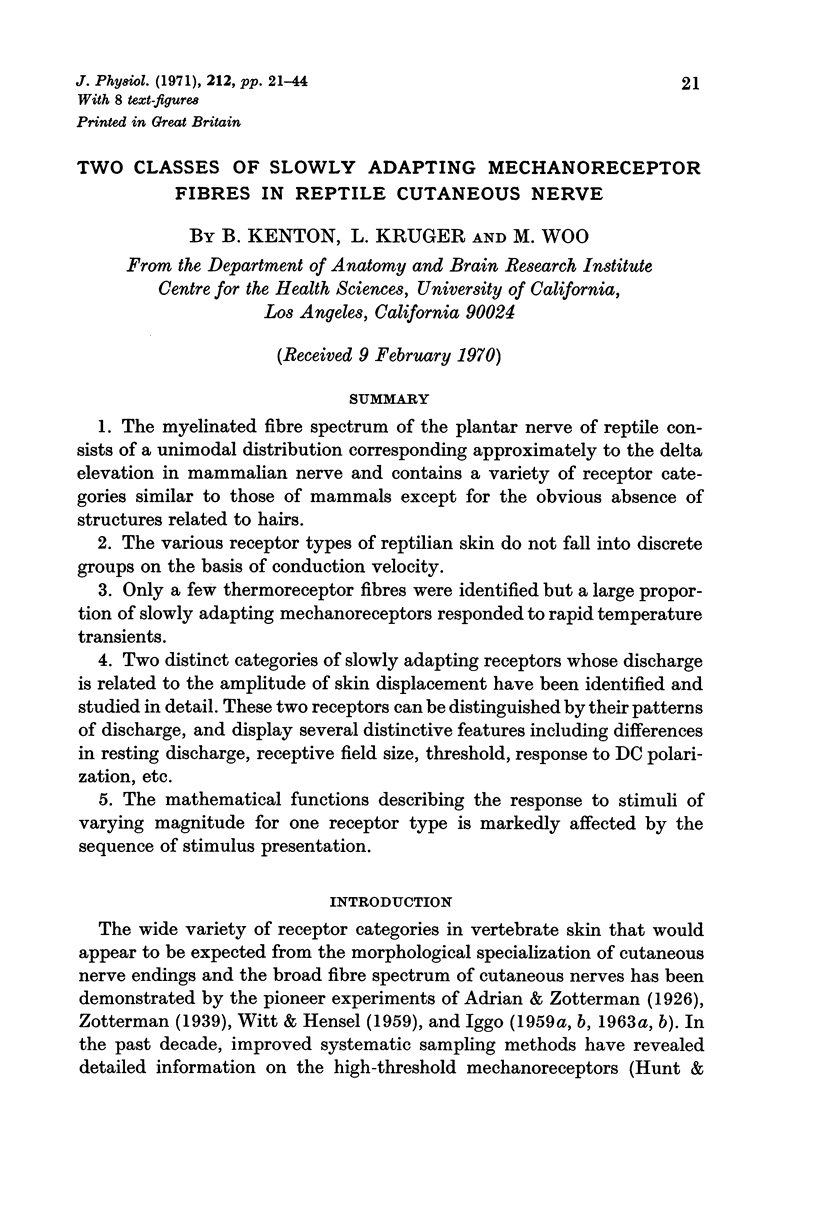
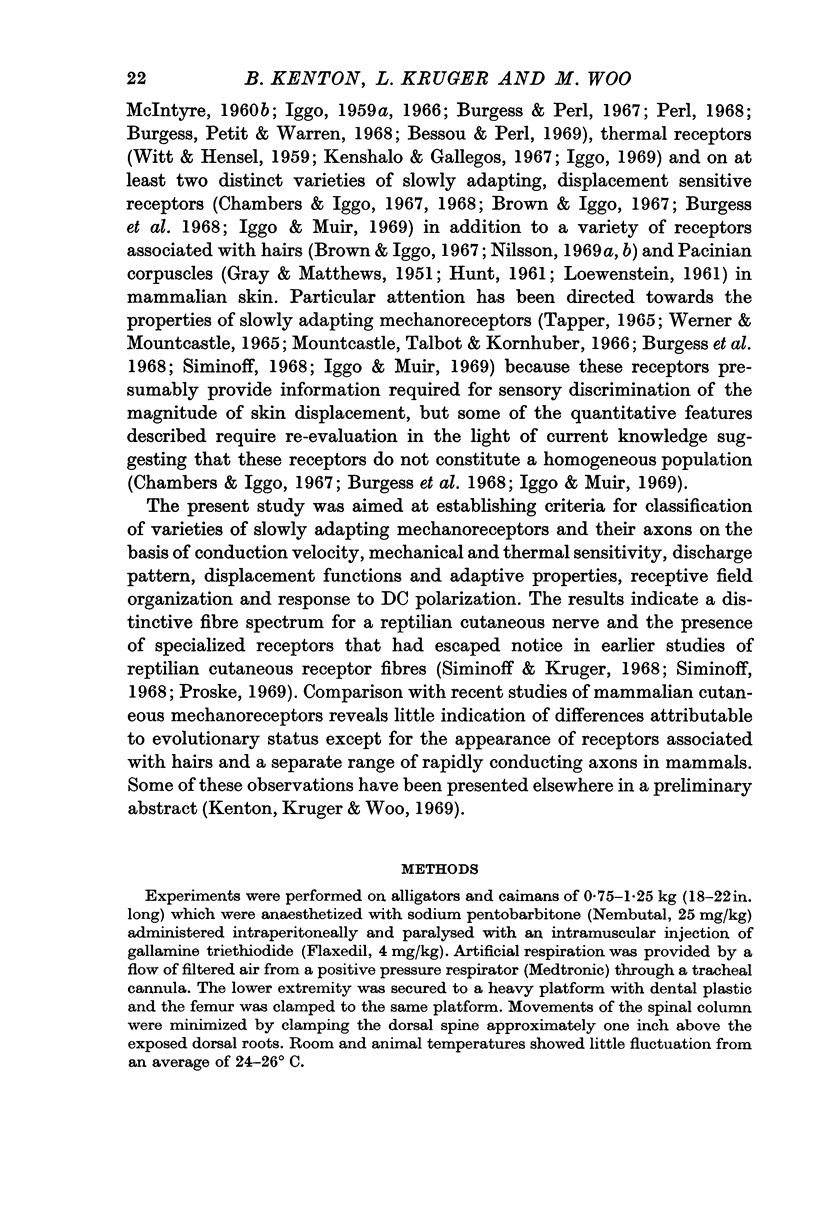
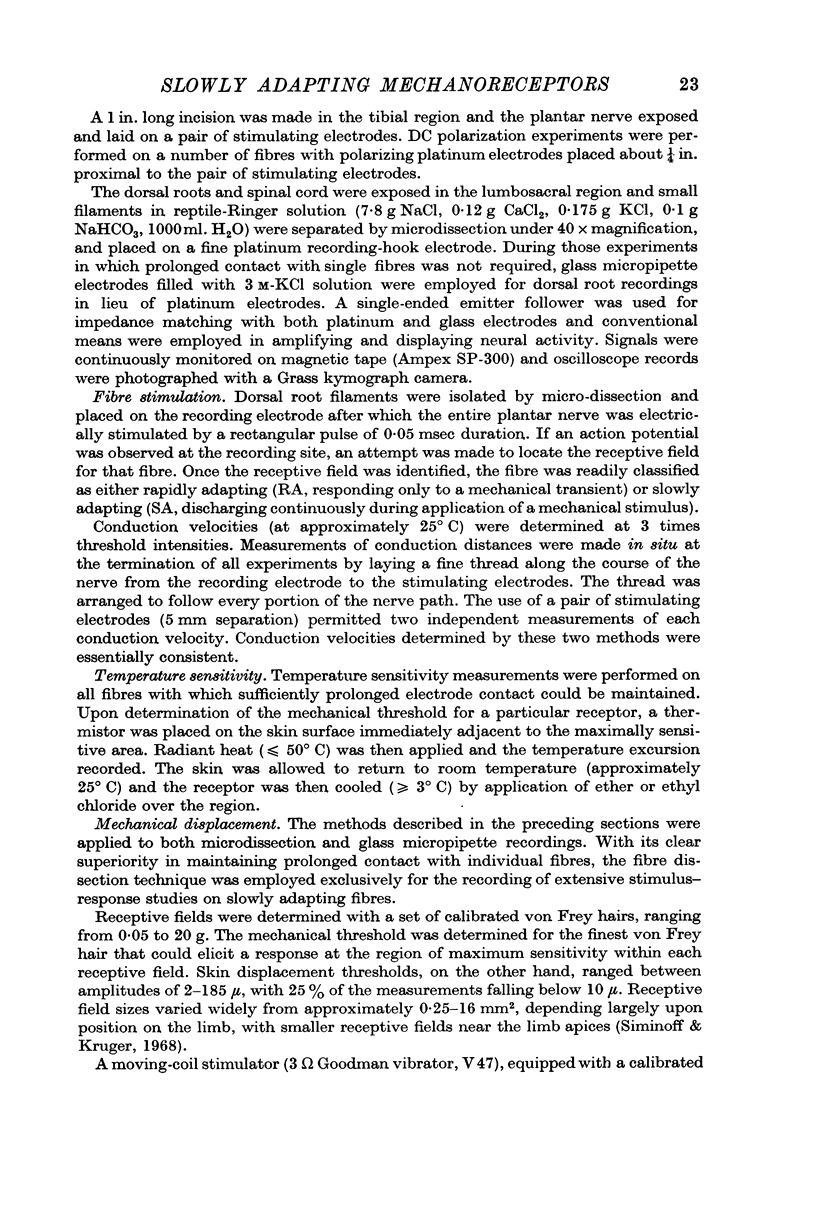
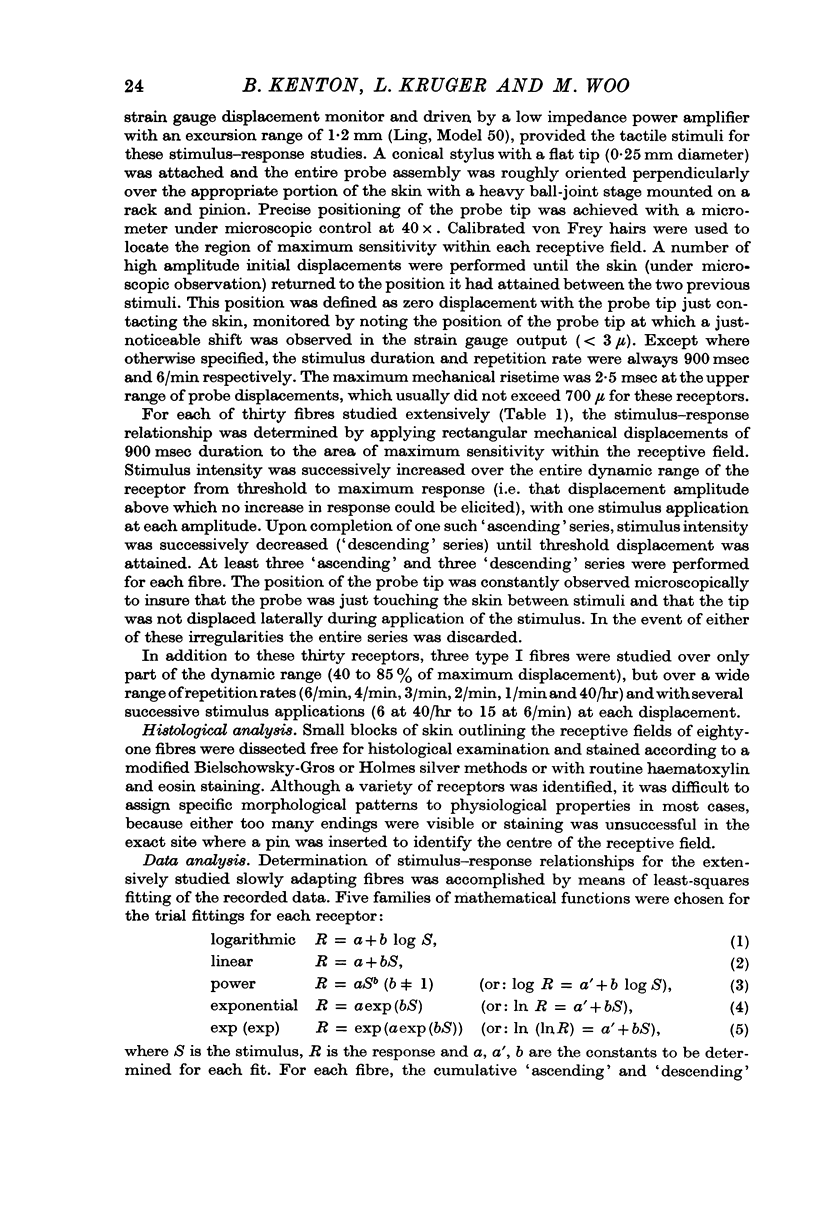
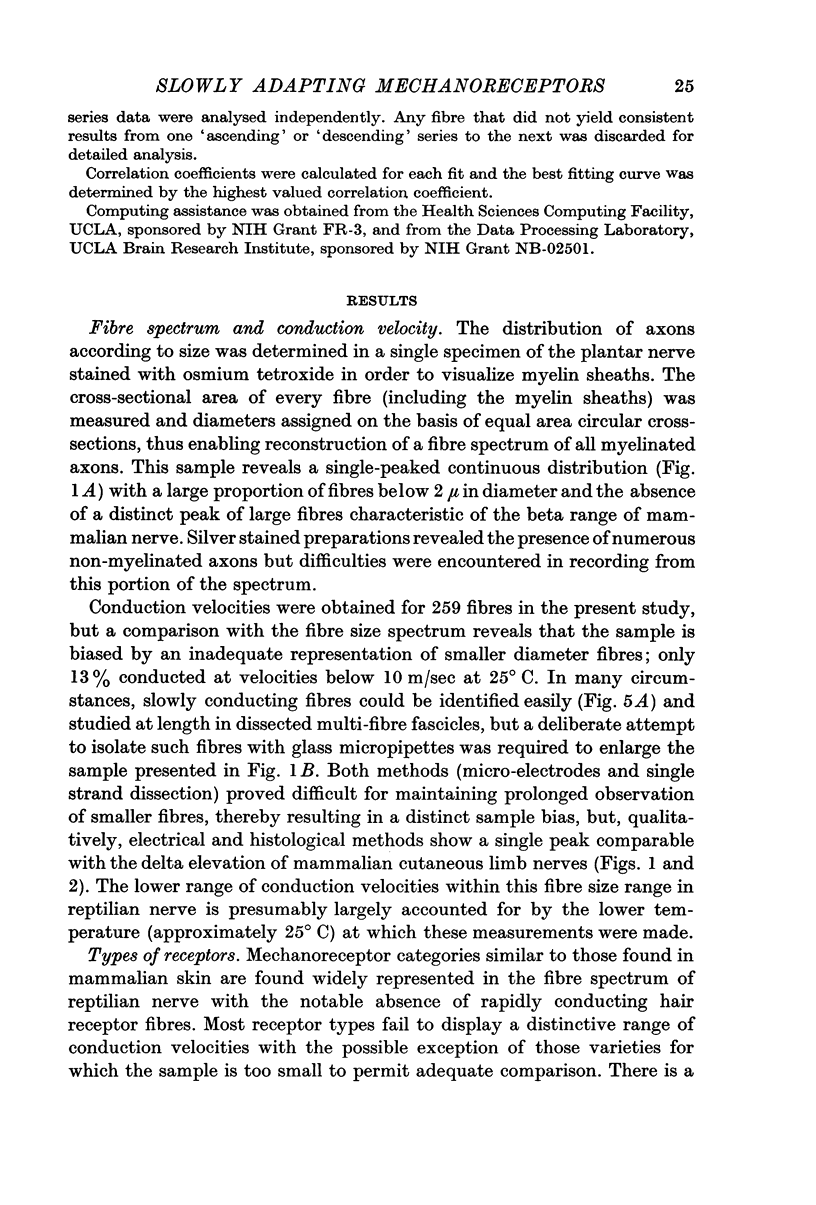
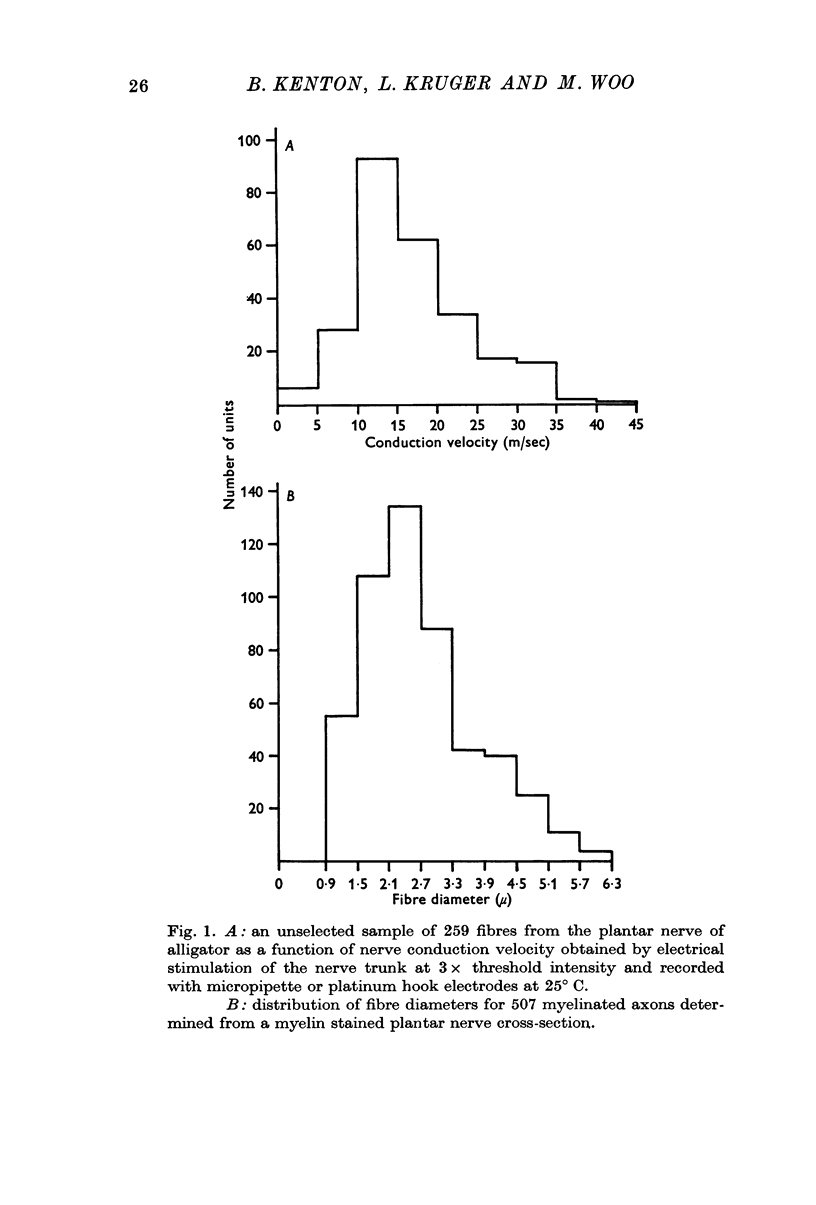
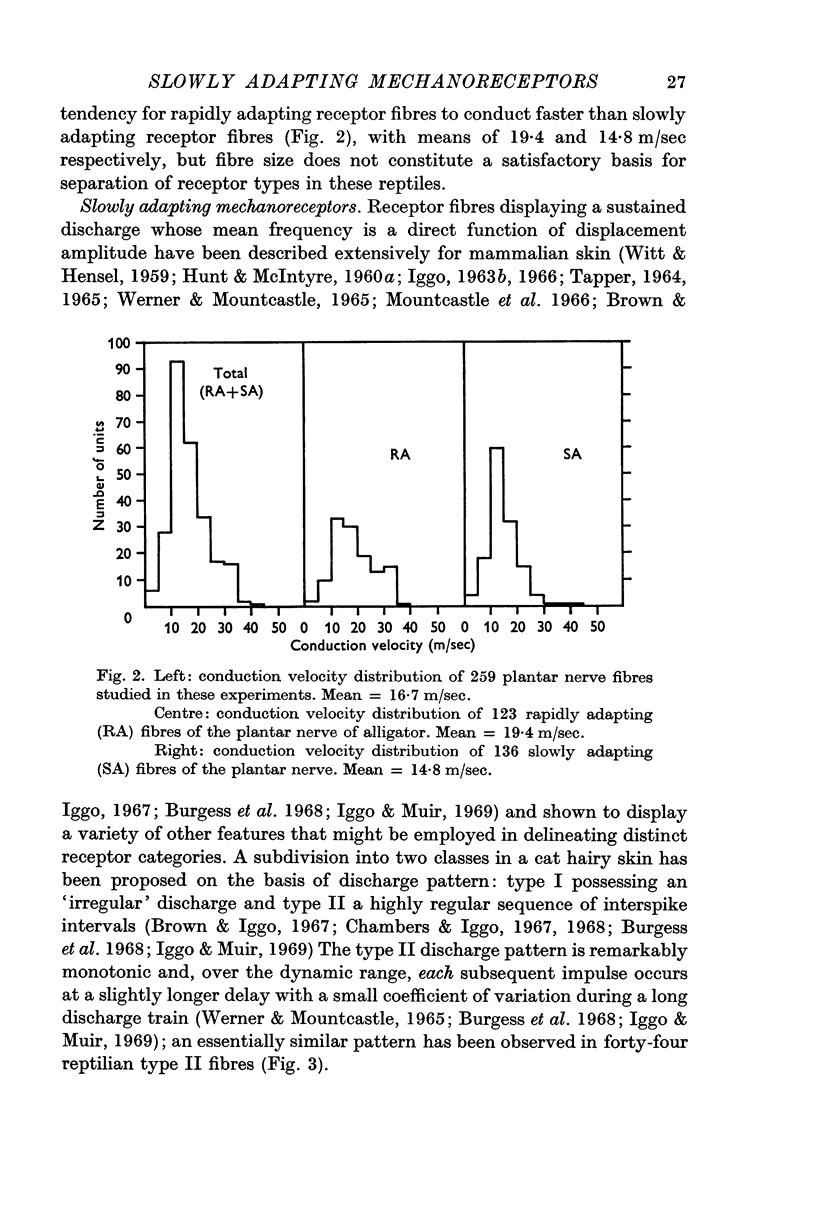

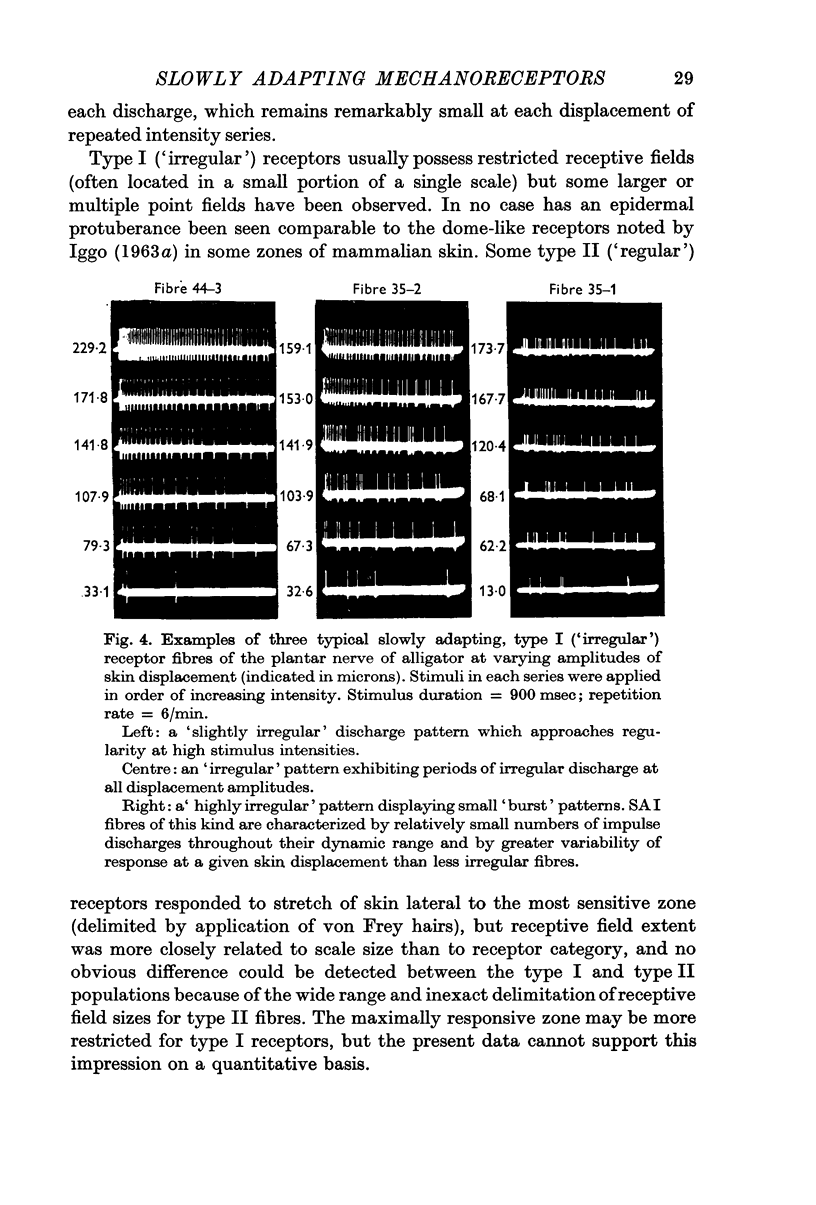

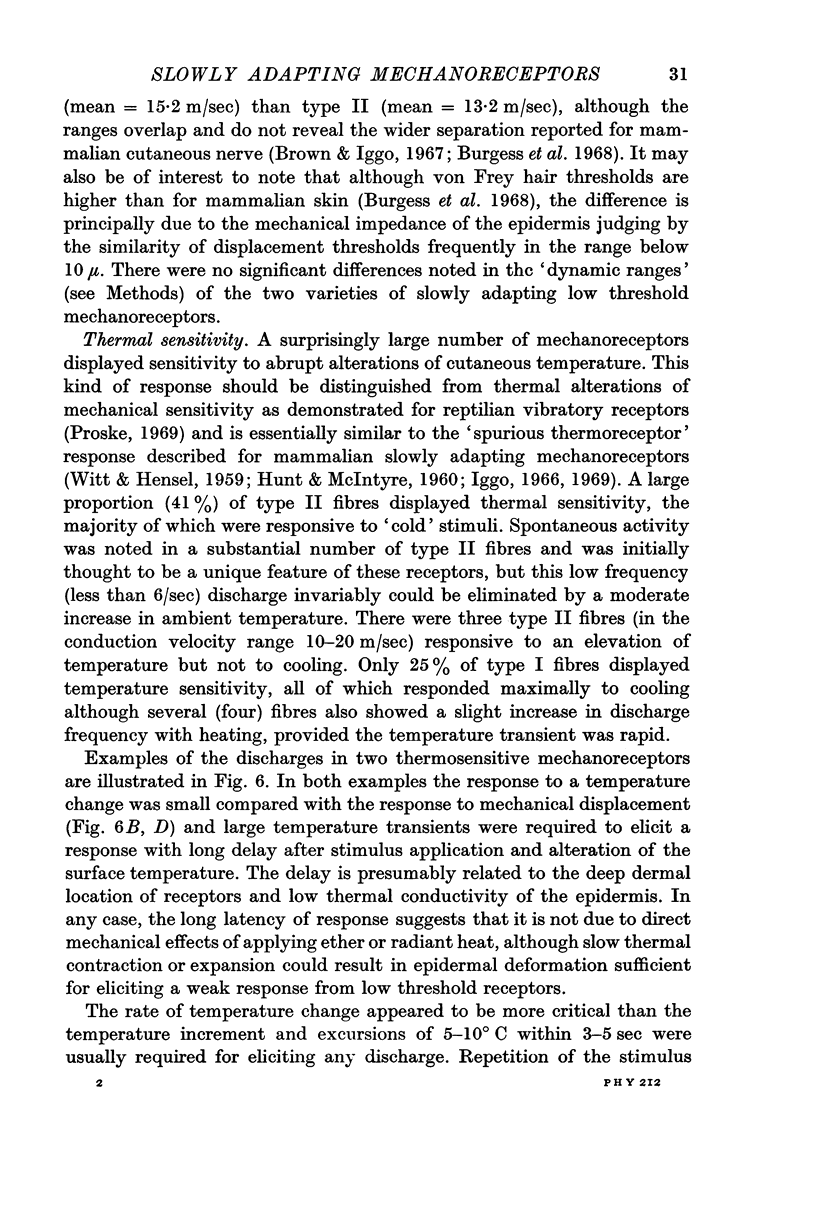

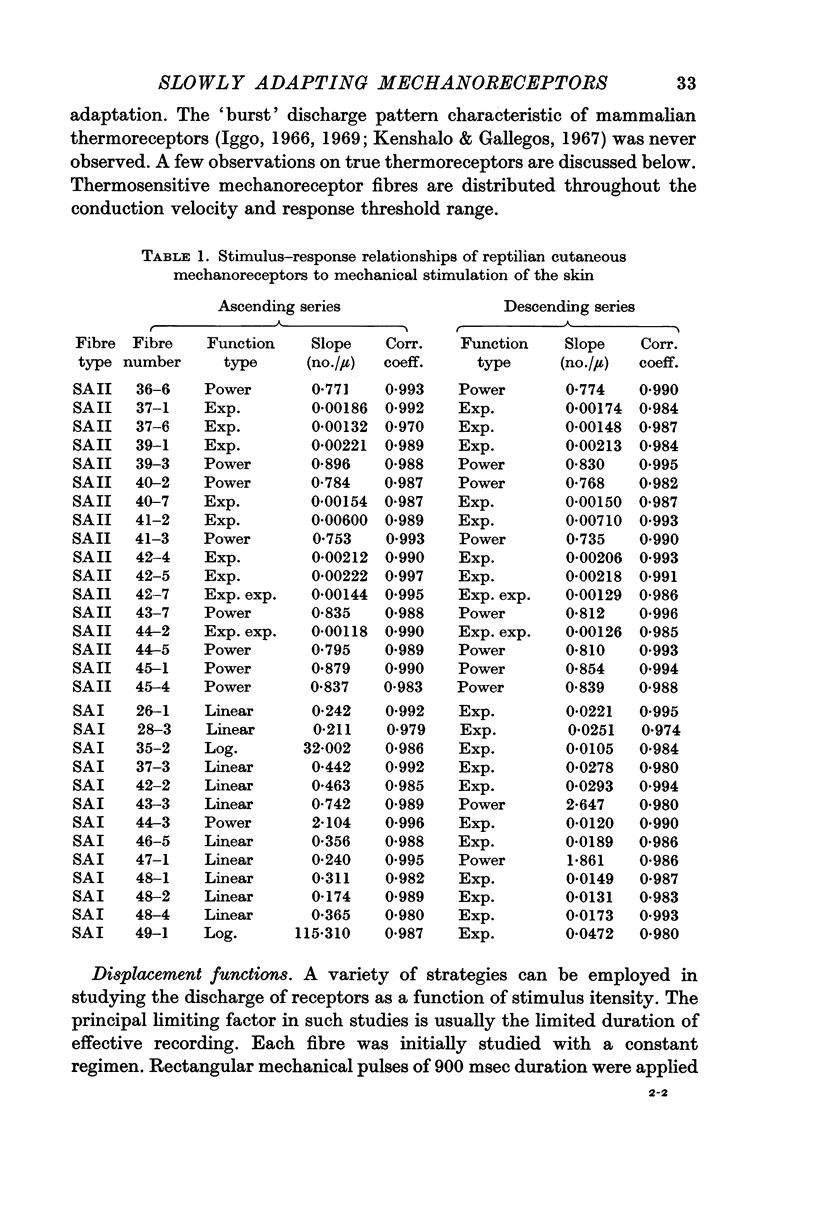
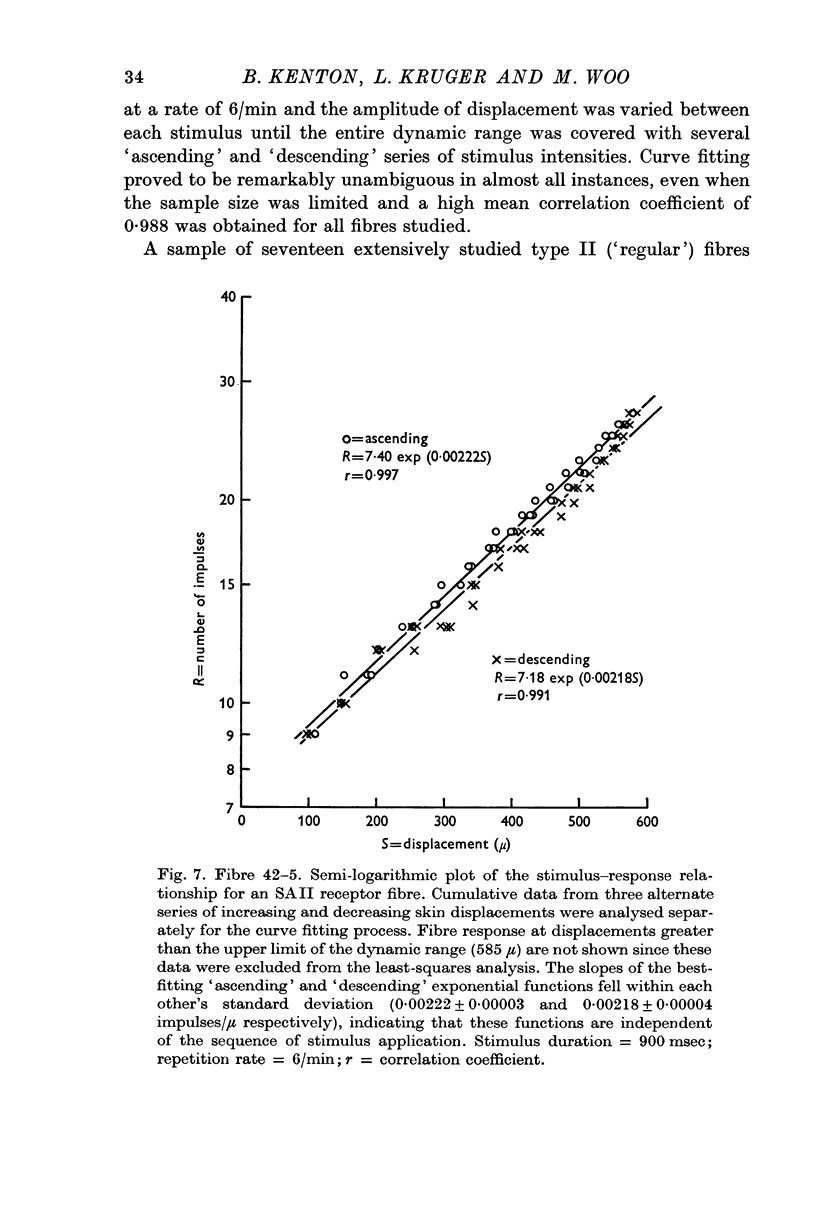
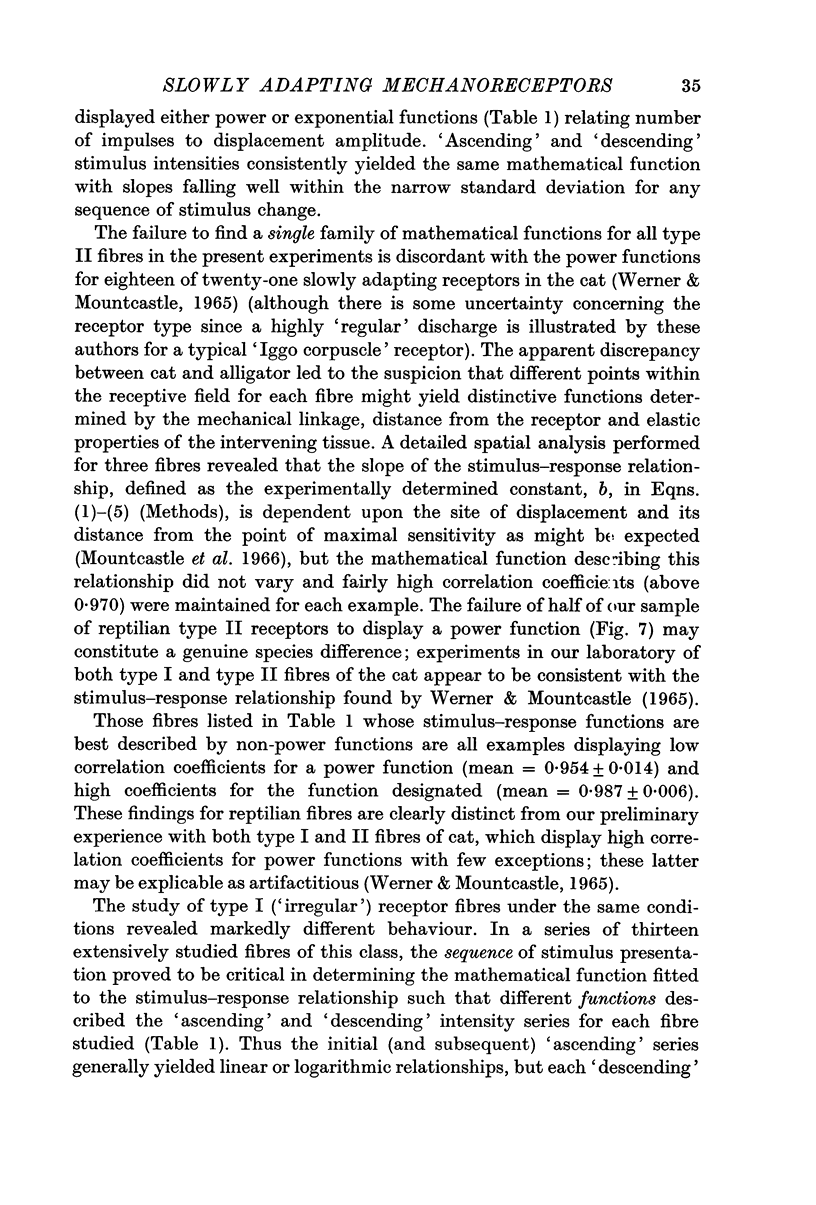


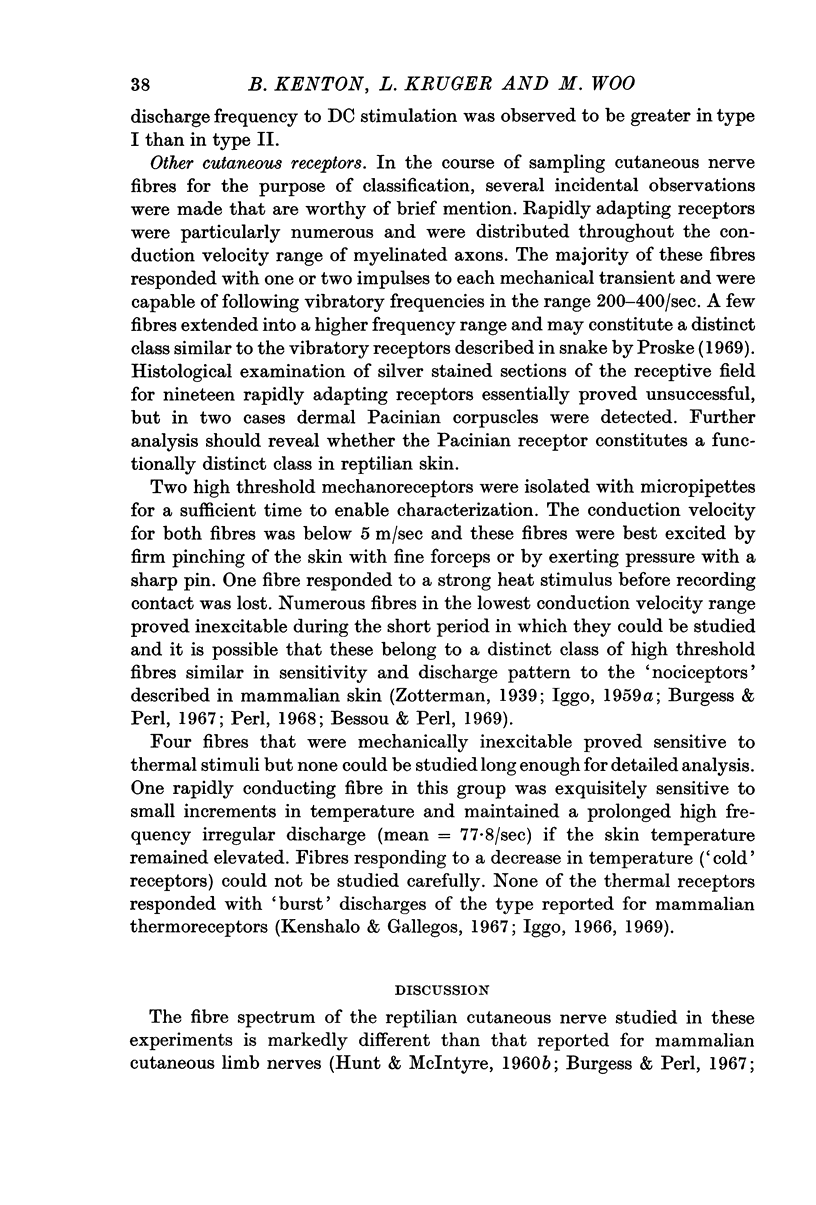
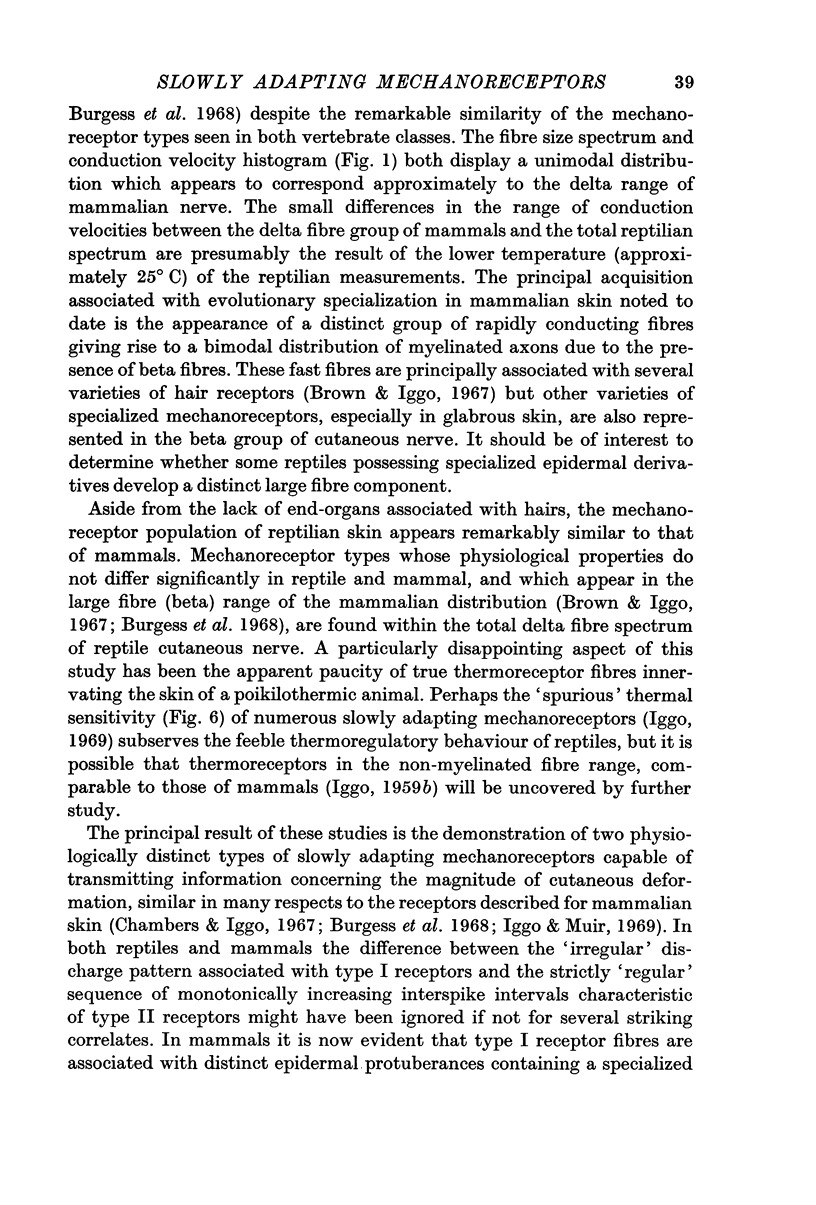
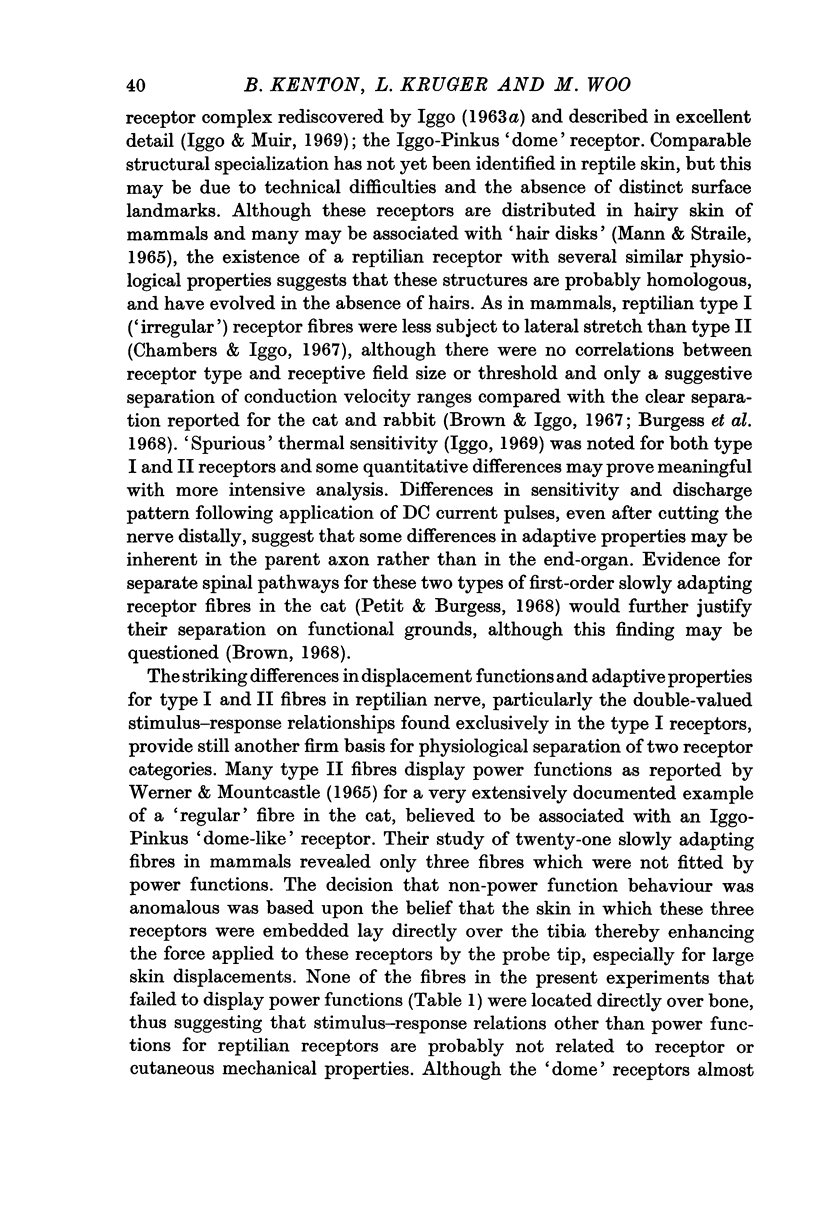
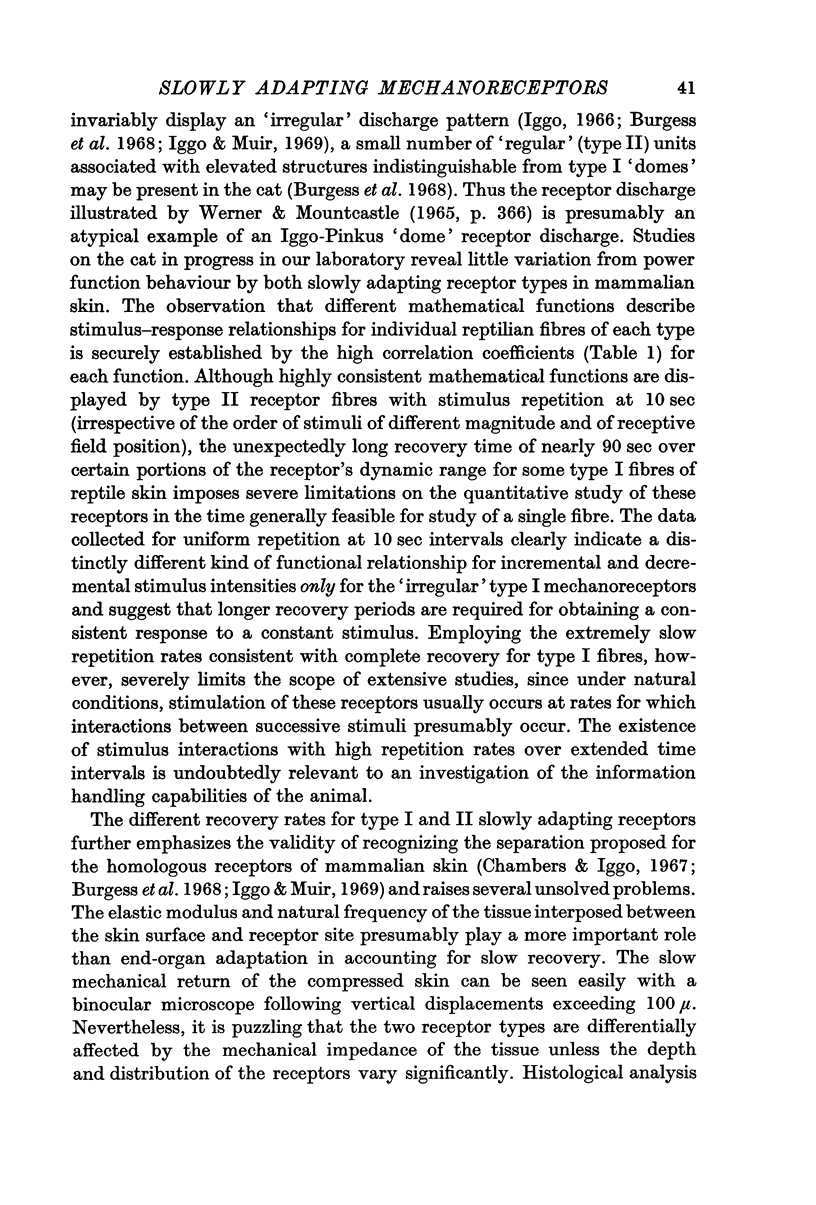
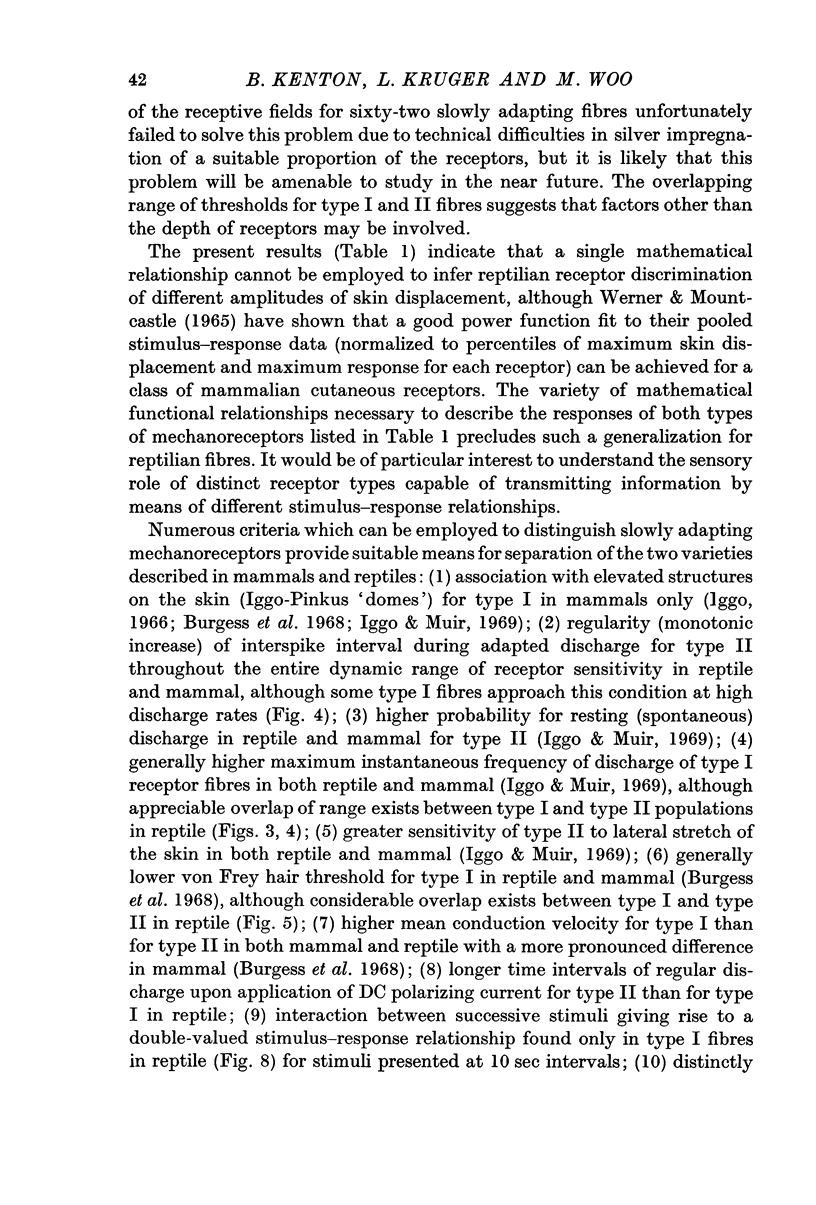

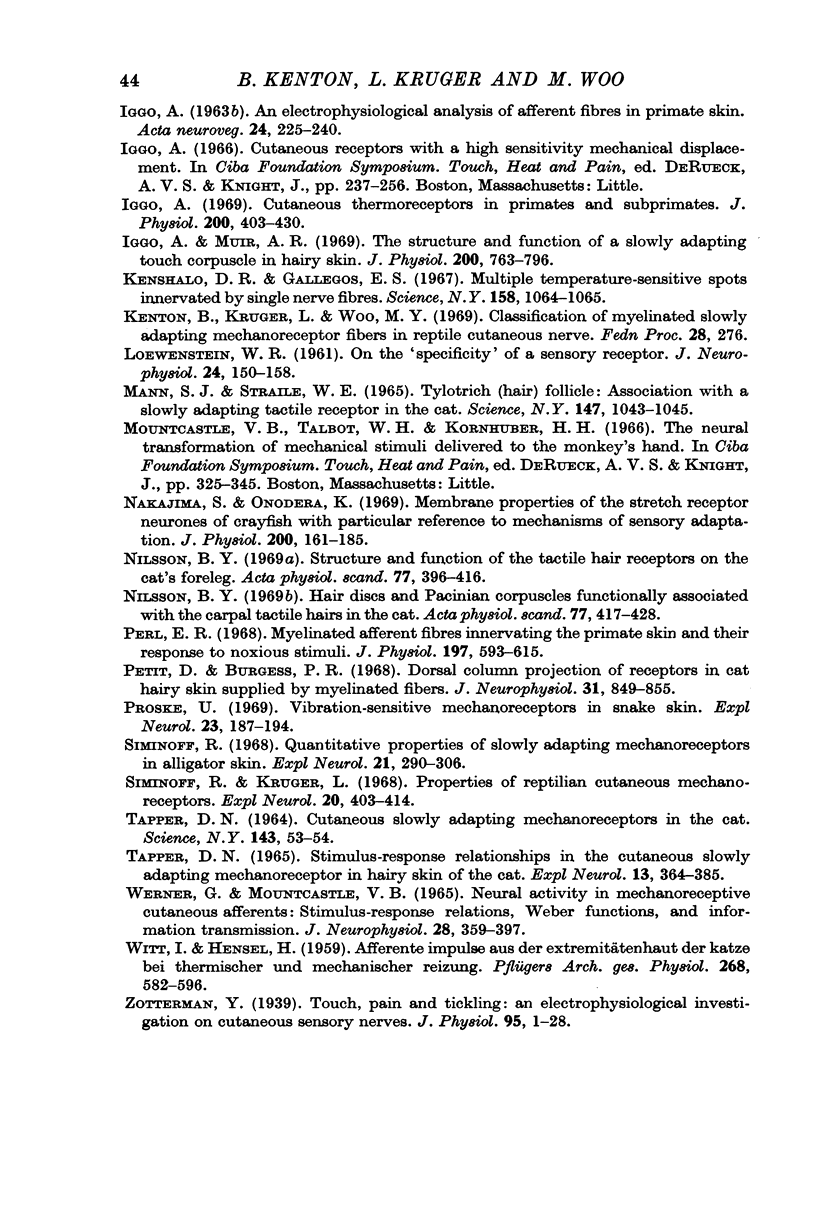
Selected References
These references are in PubMed. This may not be the complete list of references from this article.
- Adrian E. D., Zotterman Y. The impulses produced by sensory nerve-endings: Part II. The response of a Single End-Organ. J Physiol. 1926 Apr 23;61(2):151–171. doi: 10.1113/jphysiol.1926.sp002281. [DOI] [PMC free article] [PubMed] [Google Scholar]
- Bessou P., Perl E. R. Response of cutaneous sensory units with unmyelinated fibers to noxious stimuli. J Neurophysiol. 1969 Nov;32(6):1025–1043. doi: 10.1152/jn.1969.32.6.1025. [DOI] [PubMed] [Google Scholar]
- Brown A. G. Cutaneous afferent fibre collaterals in the dorsal columns of the cat. Exp Brain Res. 1968;5(4):293–305. doi: 10.1007/BF00235904. [DOI] [PubMed] [Google Scholar]
- Brown A. G., Iggo A. A quantitative study of cutaneous receptors and afferent fibres in the cat and rabbit. J Physiol. 1967 Dec;193(3):707–733. doi: 10.1113/jphysiol.1967.sp008390. [DOI] [PMC free article] [PubMed] [Google Scholar]
- Burgess P. R., Perl E. R. Myelinated afferent fibres responding specifically to noxious stimulation of the skin. J Physiol. 1967 Jun;190(3):541–562. doi: 10.1113/jphysiol.1967.sp008227. [DOI] [PMC free article] [PubMed] [Google Scholar]
- Burgess P. R., Petit D., Warren R. M. Receptor types in cat hairy skin supplied by myelinated fibers. J Neurophysiol. 1968 Nov;31(6):833–848. doi: 10.1152/jn.1968.31.6.833. [DOI] [PubMed] [Google Scholar]
- GRAY J. A. B., MATTHEWS P. B. C. A comparison of the adaptation of the Pacinian corpuscle with the accommodation of its own axon. J Physiol. 1951 Aug;114(4):454–464. doi: 10.1113/jphysiol.1951.sp004636. [DOI] [PMC free article] [PubMed] [Google Scholar]
- HUNT C. C., McINTYRE A. K. An analysis of fibre diameter and receptor characteristics of myelinated cutaneous afferent fibres in cat. J Physiol. 1960 Aug;153:99–112. doi: 10.1113/jphysiol.1960.sp006521. [DOI] [PMC free article] [PubMed] [Google Scholar]
- HUNT C. C., McINTYRE A. K. Properties of cutaneous touch receptors in cat. J Physiol. 1960 Aug;153:88–98. doi: 10.1113/jphysiol.1960.sp006520. [DOI] [PMC free article] [PubMed] [Google Scholar]
- HUNT C. C. On the nature of vibration receptors in the hind limb of the cat. J Physiol. 1961 Jan;155:175–186. doi: 10.1113/jphysiol.1961.sp006621. [DOI] [PMC free article] [PubMed] [Google Scholar]
- IGGO A. Cutaneous heat and cold receptors with slowly conducting (C) afferent fibres. Q J Exp Physiol Cogn Med Sci. 1959 Oct;44:362–370. doi: 10.1113/expphysiol.1959.sp001417. [DOI] [PubMed] [Google Scholar]
- Iggo A. Cutaneous thermoreceptors in primates and sub-primates. J Physiol. 1969 Feb;200(2):403–430. doi: 10.1113/jphysiol.1969.sp008701. [DOI] [PMC free article] [PubMed] [Google Scholar]
- Iggo A., Muir A. R. The structure and function of a slowly adapting touch corpuscle in hairy skin. J Physiol. 1969 Feb;200(3):763–796. doi: 10.1113/jphysiol.1969.sp008721. [DOI] [PMC free article] [PubMed] [Google Scholar]
- Kenshalo D. R., Gallegos E. S. Multiple temperature-sensitive spots innervated by single nerve fibers. Science. 1967 Nov;158(3804):1064–1065. doi: 10.1126/science.158.3804.1064. [DOI] [PubMed] [Google Scholar]
- LOEWENSTEIN W. R. On the 'specificity' of a sensory receptor. J Neurophysiol. 1961 Mar;24:150–158. doi: 10.1152/jn.1961.24.2.150. [DOI] [PubMed] [Google Scholar]
- MANN S. J., STRAILE W. E. TYLOTRICH (HAIR) FOLLICLE: ASSOCIATION WITH A SLOWLY ADAPTING TACTILE RECEPTOR IN THE CAT. Science. 1965 Feb 26;147(3661):1043–1045. doi: 10.1126/science.147.3661.1043. [DOI] [PubMed] [Google Scholar]
- Nakajima S., Onodera K. Membrane properties of the stretch receptor neurones of crayfish with particular reference to mechanisms of sensory adaptation. J Physiol. 1969 Jan;200(1):161–185. doi: 10.1113/jphysiol.1969.sp008687. [DOI] [PMC free article] [PubMed] [Google Scholar]
- Nilsson B. Y. Hair discs and Pacinian corpuscles functionally associated with the carpal tactile hairs in the cat. Acta Physiol Scand. 1969 Dec;77(4):417–428. doi: 10.1111/j.1748-1716.1969.tb04585.x. [DOI] [PubMed] [Google Scholar]
- Nilsson B. Y. Structure and function of the tactile hair receptors on the cat's foreleg. Acta Physiol Scand. 1969 Dec;77(4):396–416. doi: 10.1111/j.1748-1716.1969.tb04584.x. [DOI] [PubMed] [Google Scholar]
- Perl E. R. Myelinated afferent fibres innervating the primate skin and their response to noxious stimuli. J Physiol. 1968 Aug;197(3):593–615. doi: 10.1113/jphysiol.1968.sp008576. [DOI] [PMC free article] [PubMed] [Google Scholar]
- Petit D., Burgess P. R. Dorsal column projection of receptors in cat hairy skin supplied by myelinated fibers. J Neurophysiol. 1968 Nov;31(6):849–855. doi: 10.1152/jn.1968.31.6.849. [DOI] [PubMed] [Google Scholar]
- Proske U. Vibration-sensitive mechanoreceptors in snake skin. Exp Neurol. 1969 Feb;23(2):187–194. doi: 10.1016/0014-4886(69)90055-7. [DOI] [PubMed] [Google Scholar]
- Siminoff R., Kruger L. Properties of reptilian cutaneous mechanoreceptors. Exp Neurol. 1968 Mar;20(3):403–414. doi: 10.1016/0014-4886(68)90083-6. [DOI] [PubMed] [Google Scholar]
- TAPPER D. N. CUTANEOUS SLOWLY ADAPTING MECHANORECEPTORS IN THE CAT. Science. 1964 Jan 3;143(3601):53–54. doi: 10.1126/science.143.3601.53. [DOI] [PubMed] [Google Scholar]
- Tapper D. N. Stimulus-response relationships in the cutaneous slowly-adapting mechanoreceptor in hairy skin of the cat. Exp Neurol. 1965 Dec;13(4):364–385. doi: 10.1016/0014-4886(65)90125-1. [DOI] [PubMed] [Google Scholar]
- WERNER G., MOUNTCASTLE V. B. NEURAL ACTIVITY IN MECHANORECEPTIVE CUTANEOUS AFFERENTS: STIMULUS-RESPONSE RELATIONS, WEBER FUNCTIONS, AND INFORMATION TRANSMISSION. J Neurophysiol. 1965 Mar;28:359–397. doi: 10.1152/jn.1965.28.2.359. [DOI] [PubMed] [Google Scholar]
- WITT I., HENSEL H. Afferente Impulse aus der Extremitätenhaut der Katze bei thermischer und mechanischer Reizung. Pflugers Arch. 1959;268(6):582–596. doi: 10.1007/BF00362294. [DOI] [PubMed] [Google Scholar]
- Zotterman Y. Touch, pain and tickling: an electro-physiological investigation on cutaneous sensory nerves. J Physiol. 1939 Feb 14;95(1):1–28. doi: 10.1113/jphysiol.1939.sp003707. [DOI] [PMC free article] [PubMed] [Google Scholar]


